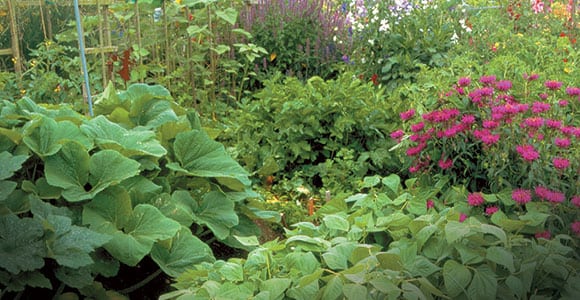Some vegetables, herbs and flowers protect and feed each other when grown side-by-side
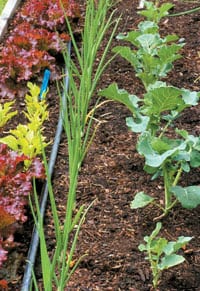
Have you ever noticed in your own garden how one vegetable plant can fail in one location yet thrive in another? Given the same soil, water and light, the two plantings don’t seem to grow the same. The difference may be a plant that’s growing next door.
This plant compatibility is the foundation of a gardening technique known as “companion planting” — a synergistic plant/world partnership that encourages plants to thrive and grow. This type of garden diversity is a complex codependency that increases the likelihood of combining plants that enhance each other’s performance.
Companion planting can benefit your garden by providing nutrients, protecting against disease, repelling pest insects, attracting beneficial insects and attracting bug-eating birds.
Plants that nourish
Certain plant allies improve the flavor of neighboring vegetables by providing nutrients. For example, comfrey, buckwheat and other plants with roots that grow deep can mine nutrients and bring them to the surface, making them more available to other plants. Various cover crops (alfalfa, clover and vetch, for example) also nourish neighboring plants with nutrients and trace minerals like nitrogen, phosphorus, potassium, calcium, magnesium and iron.
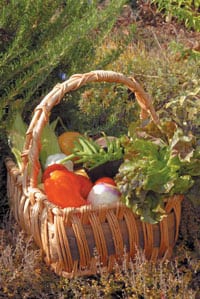
Other plants — such as peas, beans, lupines and clover — have the ability to transport nitrogen from the air we breathe down into their roots, where bacteria can convert it into a plant-friendly form for neighboring plants. In this case, corn, peas and other nitrogen-hungry plants make great companions as they will benefit from the “nitrogen-fixing ability” of the legume-type plants.
Plants that protect
Certain plants can improve the health of neighbors through a network of defensive chemicals that help ward off plant pests and disease. Marigolds are a classic example as both the French and African varieties contain thiopene in their roots — a substance that is toxic to certain types of soil-dwelling nematodes. As such, they make great companions for tomatoes, beans and other plants that are susceptible to nematode damage.
Plants that use similar defensive chemicals to protect against disease-causing pathogens include garlic, onions and chives — commonly known compatibles that prevent black spot on roses and scab on apples. Likewise, brassica roots release chemicals that suppress some soil-borne diseases. Equally important are silica-rich plants such as comfrey and borage, which may help neutralize rust, fungal attacks and other water-borne diseases. And dandelions in a tomato patch are a good thing as their presence may deter fusarium wilt, a soil-borne fungal disease that reduces plant health and overall yields.
Other ways companions protect is by keeping less-heat-tolerant plants cool. Summertime heat can take a toll on radishes, spinach, lettuce and turnips. Larger plants such as pole beans and tomatoes provide needed shade, conserving moisture and reducing heat that would cause these vegetables to become woody or to bolt.
Plants that repel pests
Most pests locate their next meal from their host plant’s chemical odors or color. A diversified garden boasts a complexity of plant odors, colors and textures, thereby composing a natural barrier that makes it harder for these pests to locate their target meal. How easy it would be for the cabbage moth to hone in on an area growing just broccoli and cabbage. By surrounding and interplanting that same area with carrots and onions, you confuse the moth by masking the scent of the broccoli and cabbage.
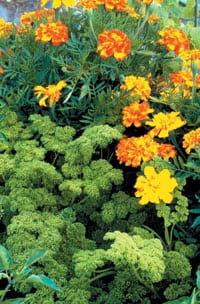
Strongly scented plants also benefit their neighbors by masking their scents, especially to those pests that rely on scent to locate good eats. Rosemary, sage, lavender, oregano and other strong-smelling plants often foil aphid attacks on susceptible neighbors. Another example is to plant the garden perimeter with garlic and marigolds to repel aphids and beetles.
Other plants contain phytotoxins that lure and then sicken or kill dining pests. Mustard oils found in cabbage and similar plants often poison unsuspecting spider mites, mosquitoes and Mexican bean beetles. Therefore, cabbage, broccoli and kale make good companion plants for beans.
Sometimes a plant can repel bugs simply by creating a physical barrier between the critter and the plant it wants to eat. If raccoons are raiding your corn, you might surround it with a scratchy barrier of squash vines. One phenomenon I’ve noticed in my own garden is that flea beetles love to devour cabbage and cauliflower, but they never seem to bother the sticky, hairy leaves of tomatoes. When I planted the two vegetables together, they stopped bothering the cabbage and cauliflower.
Catnip is another repellent plant when it comes to flea beetles, Colorado potato beetles and green peach aphids. But you don’t necessarily have to plant catnip in your garden to benefit from its protection. Catnip easily self-seeds; however, if you grow it outside the garden, it can then be cut and used as a protecting mulch.
Additional repellent plants with beneficial qualities are leeks, onions and rosemary against the carrot fly; parsley and tomatoes against the asparagus beetle; geraniums and petunias against leafhoppers; southernwood against cabbage moths; and nasturtiums against whiteflies.
 Plants that attract beneficial insects
Plants that attract beneficial insects
In this case you want to attract bugs — at least when it comes to attracting beneficial insects that prey on pests. These insatiable insects seek out and destroy pests such as aphids, slugs and snails, cucumber beetles, caterpillars and other nasty bugs that wreak havoc in our gardens.
Adult beneficials and their larvae feed on insects; however, these hard-working adults also need pollen- and nectar-rich flowers in order to survive. Begin with spring-flowering plants such as sweet alyssum and sweet woodruff. Include long-blooming plants like marigolds, coreopsis and petunias. Then extend the season with later-blooming asters, chrysanthemums and salvias.
Attract parasitic wasps, lacewings and syrphid flies with flowering members of the umbel family, including yarrow, parsley, dill and chamomile. Doing so will greatly reduce pest populations of caterpillars, aphids, leafhoppers and thrips. Sunflowers, echinacea, cosmos, zinnias and other members of the composite/daisy family are prime flowers for luring large predatory insects that dine on cucumber beetles, grasshopper eggs, slugs and caterpillar pests. And, when you get behind on harvesting your broccoli and lettuce, leave them be. Their flowers also provide a food source for beneficials.
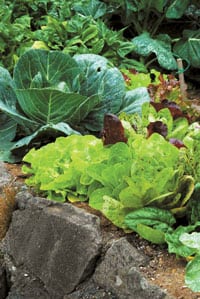
Plants that attract bug-eating birds
Another way to keep bad bugs in check is to attract birds that feast on insects. Bugs from soil-dwelling grubs to codling moths in flight provide a first-class feast for chickadees, robins, wrens, swallows and other bug-eating birds.
The best way to attract these beneficial birds is to grow a mix of nectar, seed and fruit-bearing plants. For example, cosmos, asters, zinnias, sunflowers and other seed-bearing annual or perennial plants attract a variety of songbirds that also feast on insects. And tubular- or bell-shaped flowers rich in nectar — such as bee balm, pineapple sage, nicotiana, verbena and salvia — lure in hummingbirds, which also dine on caterpillars and small insects in addition to nectar.
Companion planting is all about diversity, which is key to any healthy garden. So go ahead and experiment with your own companion plantings. Grow flowers and herbs among your vegetables. For that matter, tuck a variety of vegetables in your flower bed. The end result is bound to be a more beautiful, sustainable and bountiful garden.



